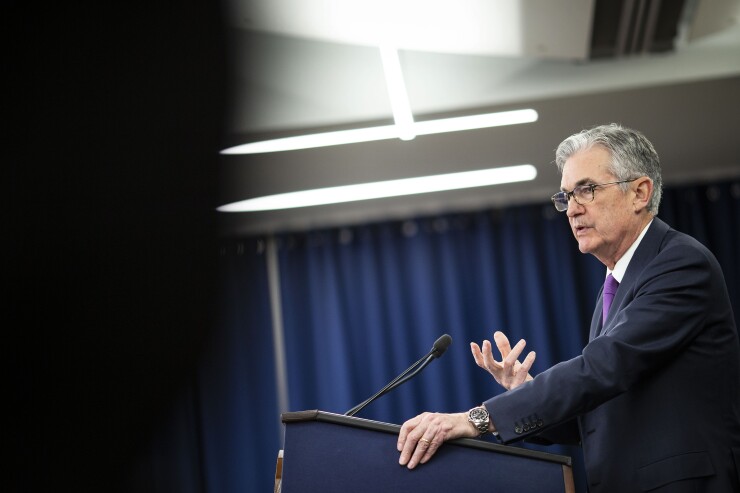
A weak jobs report has given the Federal Reserve a clear runway to
The U.S. economy added just 12,000 jobs in October, according to the Bureau of Labor Statistics employment situation summary released Friday, falling well short of the 110,000 forecasted by Dow Jones. The unemployment rate held steady at 4.1%.
Economists and government officials expected last month's job-growth data to be weak in light of the devastation of Hurricanes Helene and Milton. In a
For the Federal Open Market Committee, the challenge during its meeting next week is determining whether the development is a one-off blip or a signal of a weakening job market. After cutting its benchmark rate by half a percentage point in September, the group promised more cuts in the months ahead as it looks to protect the job market.
"That decision reflected growing confidence that, with an appropriate recalibration of our policy stance, the solid labor market can be maintained in a context of moderate economic growth and inflation continuing to move sustainably down to our target," said Fed Gov. Lisa Cook in a
For banks, the move to lower interest rates has been a blessing and a curse. On one hand, it is expected to
Next week, the FOMC will decide whether to cut again or pause to evaluate the impact of the previous reduction. Last month's labor market dip could encourage the committee to ease its policy stance further, despite the modest
Fed officials have said their monetary policy is not on a preset course and will be made based on incoming data. Friday's jobs report is the final economic indicator to be released before next week's FOMC meeting, which will be held on Wednesday and Thursday — pushed back a day because of federal elections on Tuesday.
Despite the Fed's aggressive monetary policy stance, which has kept the federal funds rate above 5% for the past year and a half, the labor market has proven resilient. The U.S. has averaged more than 200,000 new jobs per month during the past year, according to the BLS, including 254,000 added in September.
Yet, the pace of growth has slowed in recent months. Despite upward revisions to July and August data, the three-month average before Friday's report was 186,000 jobs added. The unemployment rate has also risen from 3.7% at the beginning of the year as labor market participation increases and the number of job openings dwindles.
Last month, Waller said he expects the jobless rate to rise slightly in the months ahead but remain low by historical standards. During his remarks, he said whatever happens this month, he expects the overall reduction of the Fed's policy rate to happen gradually.
"While much attention is given to the size of cuts over the next meeting or two, I think the larger message of the [the FOMC's projections] is that there is a considerable extent of policy restrictiveness to remove, and if the economy continues in its current sweet spot, this will happen gradually," Waller said.
Some committee participants will look at the latest jobs report with a skeptical eye. Fed Gov. Michelle Bowman — the lone dissenting vote against the Fed's half-point cut in September — said the recent pattern of significant revisions to government economic reports means all new data must be taken with a grain of salt.
"In light of the dissonance created by conflicting economic signals, measurement challenges, and data revisions, I remain cautious about taking signals from only a limited set of real-time data releases," Bowman said in a Sept. 30 speech.






